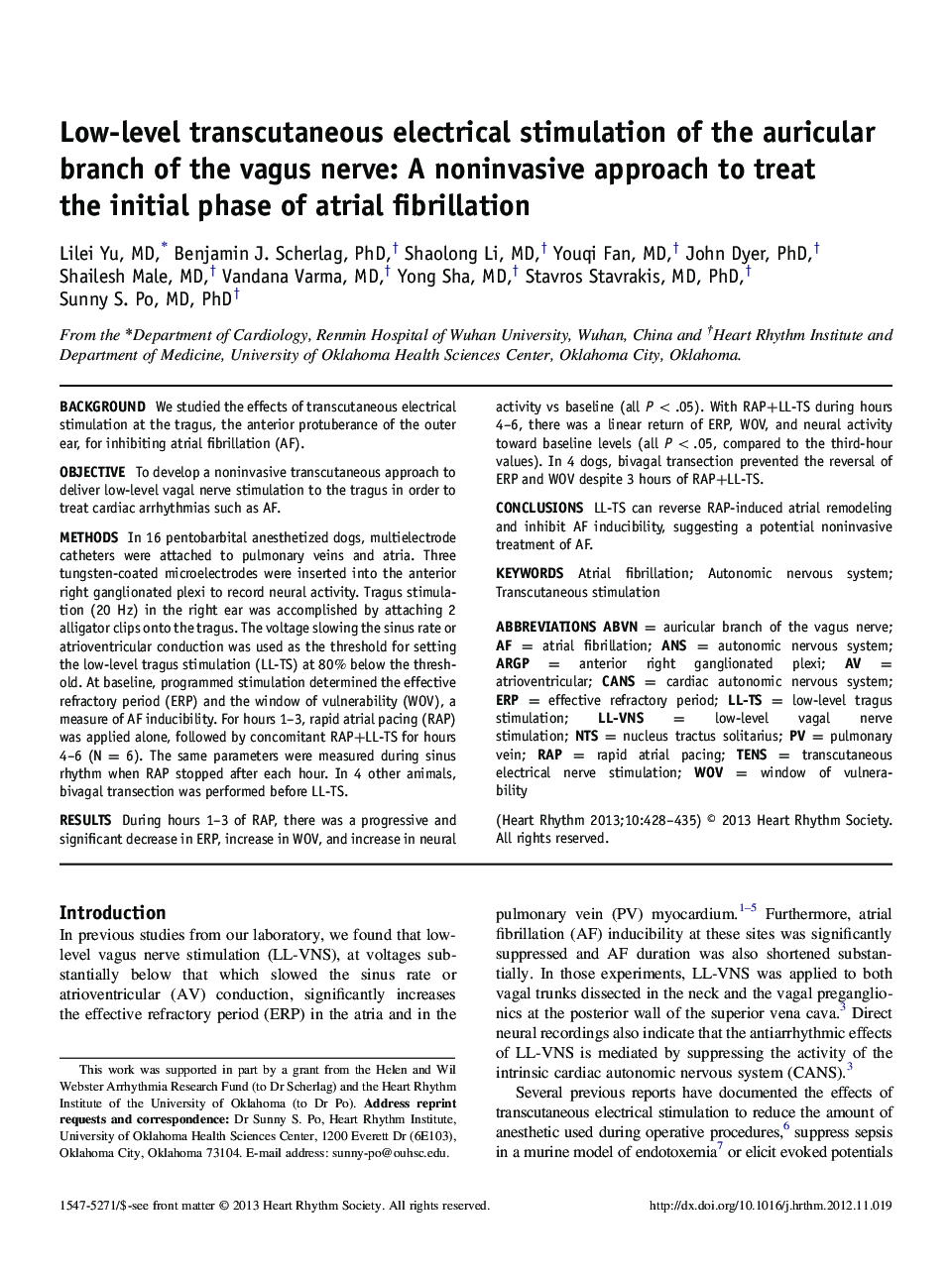| کد مقاله | کد نشریه | سال انتشار | مقاله انگلیسی | نسخه تمام متن |
|---|---|---|---|---|
| 2922242 | 1175838 | 2013 | 8 صفحه PDF | دانلود رایگان |

BackgroundWe studied the effects of transcutaneous electrical stimulation at the tragus, the anterior protuberance of the outer ear, for inhibiting atrial fibrillation (AF).ObjectiveTo develop a noninvasive transcutaneous approach to deliver low-level vagal nerve stimulation to the tragus in order to treat cardiac arrhythmias such as AF.MethodsIn 16 pentobarbital anesthetized dogs, multielectrode catheters were attached to pulmonary veins and atria. Three tungsten-coated microelectrodes were inserted into the anterior right ganglionated plexi to record neural activity. Tragus stimulation (20 Hz) in the right ear was accomplished by attaching 2 alligator clips onto the tragus. The voltage slowing the sinus rate or atrioventricular conduction was used as the threshold for setting the low-level tragus stimulation (LL-TS) at 80% below the threshold. At baseline, programmed stimulation determined the effective refractory period (ERP) and the window of vulnerability (WOV), a measure of AF inducibility. For hours 1–3, rapid atrial pacing (RAP) was applied alone, followed by concomitant RAP+LL-TS for hours 4–6 (N = 6). The same parameters were measured during sinus rhythm when RAP stopped after each hour. In 4 other animals, bivagal transection was performed before LL-TS.ResultsDuring hours 1–3 of RAP, there was a progressive and significant decrease in ERP, increase in WOV, and increase in neural activity vs baseline (all P<.05). With RAP+LL-TS during hours 4–6, there was a linear return of ERP, WOV, and neural activity toward baseline levels (all P<.05, compared to the third-hour values). In 4 dogs, bivagal transection prevented the reversal of ERP and WOV despite 3 hours of RAP+LL-TS.ConclusionsLL-TS can reverse RAP-induced atrial remodeling and inhibit AF inducibility, suggesting a potential noninvasive treatment of AF.
Journal: Heart Rhythm - Volume 10, Issue 3, March 2013, Pages 428–435